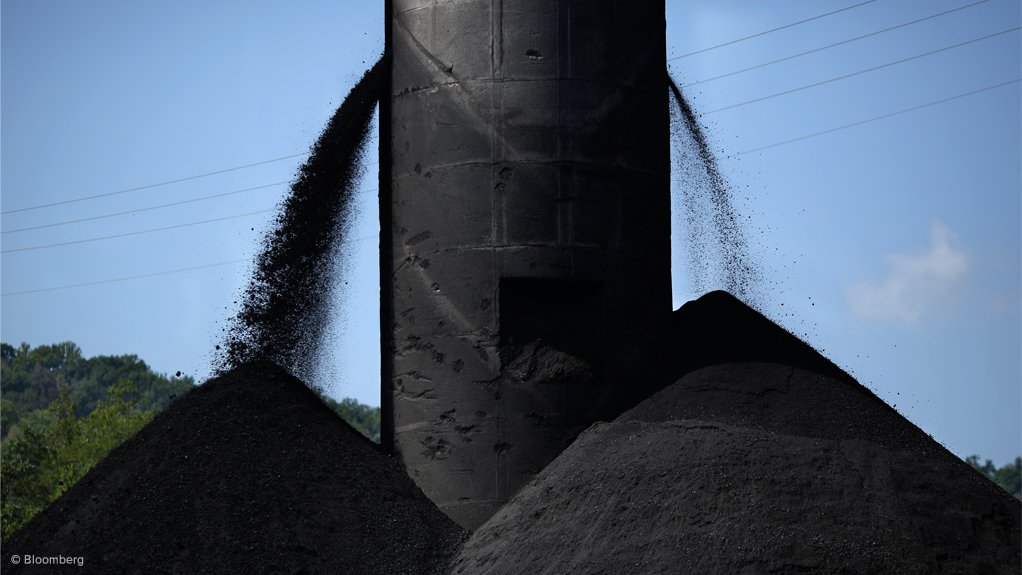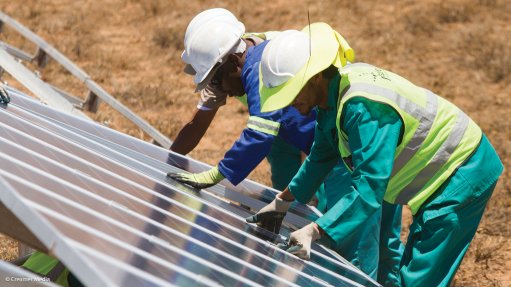Concerns mount over EPA potentially duplicating reclamation assurance rules
VANCOUVER (miningweekly.com) – The chairpersons of the US House of Representatives' Energy and Commerce Committee and Natural Resources Committee on Tuesday sent a letter to the US Environmental Protection Agency (EPA) voicing their concern regarding the agency’s work on developing financial assurance requirements for the hard rock mining industry.
Under Section 108(b) of the Comprehensive Environmental Response, Compensation and Liability Act (CERCLA), the EPA is considering creating a regulatory regime for the hard rock mining industry regarding aspects of risk management and financial assurance. The EPA was mandated to undertake this work as a result of a lawsuit brought by nongovernmental organisations (NGOs) in the US Court of Appeals for the District of Columbia Circuit by December.
Referencing the Natural Resources Committee's jurisdiction over the laws that impacted the hard rock mining industry, and the Energy and Commerce Committee’s jurisdiction over the CERCLA, respective chairpersons Rob Bishop and Fred Upton addressed a letter to EPA administrator Gina McCarthy noting that they had direct interest in EPA’s consideration of regulations that might impact beneficial access to the natural resources of the US, and protection of the environment.
They expressed concern as to whether the EPA was analysing existing federal and state requirements in terms of potential or duplicative regulations.
". . . While we recognise the importance of financial assurance, we are concerned about whether the EPA has adequately analysed existing federal and state financial assurance requirements to evaluate properly the need for additional regulation. We are particularly troubled with the issue of pre-emption and whether the 108(b) rule is duplicative of existing federal and state programmes, and if additional regulation is needed, to be sure the new requirements are consistent with other financial assurance programmes,” the chairpersons stated.
They added: “If the agency fails to reduce the amount of the CERCLA financial assurance obligation to account for these programmes, it will result in the unnecessary and duplicative imposition of many billions of dollars of financial assurance requirements on the mining industry.”
The letter also assessed the importance of mining from a national economic standpoint, along with its potential impact on the environment. The committees requested documents from the EPA and posed several questions addressing further concerns.
CARBON COPY?
Concern also came from other quarters, including western state governors, state regulatory agencies and the surety industry, who added their voices to the concerns of the mining industry.
According to the US National Mining Association, all warned of a costly regulatory approach based on a superficial analysis that did not support the need for a redundant bonding requirement to ensure reclamation and other post-mining activities, such as long-term groundwater monitoring or treatment.
All stakeholders questioned the need for the EPA to duplicate existing federal and state programmes that already addressed the exact types of risks the EPA was targeting.
The organisations warned that the EPA’s approach under the CERCLA (also known as the ‘Superfund Law’) was seriously flawed and ought to be rethought.
The Surety and Fidelity Association of America believes that allowing multiple claimants under the Superfund Law threatens the availability of funds to remediate post-mining sites.
“Imposing duplicative financial assurance requirements on the hard rock mining industry will improperly hamper effective state programmes,” the Western Governors Association stated.
Further, the Interstate Mining Compact Commission passed a resolution highlighting the states' concern that the EPA might be attempting to fill alleged ‘gaps’ in state reclamation bonding programmes that either might not exist, or are unrelated to the purpose of a reclamation bonding programme.
COAL CONCERN
Meanwhile, the US Department of the Interior’s Office of Surface Mining Reclamation and Enforcement (OSMRE) on Tuesday issued an unprecedented advisory regarding financial assurance practices in the coal mining industry in response to the significant market shifts facing major coal companies and associated financial difficulties that could affect their ability to carry out obligations for reclamation of the lands disturbed by their surface mining operations.
The policy advisory suggests that guidance be issued to state agencies in terms of regulated surface coal mining and the restricted use of self-bonding. It also provides recommendations for surety requirements, cash or collateral bonds to ensure that coal companies have adequate financial resources to properly restore lands disturbed by surface mining activity.
“Lack of global demand for coal, competition from low-cost shale gas and the unprecedented and continuing retirement of coal-fired power plants are clear signs that the energy industry is undergoing a major transformation and it is incumbent upon OSMRE to protect the public’s interest,” director Joe Pizarchik advised on Tuesday.
In the past several months, three of the largest coal mine operators, including Peabody Energy, Arch Coal and Alpha Natural Resources, have filed for Chapter 11 protection under the US Bankruptcy Code, and it is highly likely that additional coal companies will seek bankruptcy protection.
Like many companies in the natural resources extraction sector, these coal companies are not sufficiently diversified to adjust to the recent market downturn. These same three companies hold about $2-billion of unsecured or non-collateralised self-bonds that various states with federally approved Surface Mining Control and Reclamation Act regulatory programme previously accepted to guarantee reclamation of land disturbed by coal mining. The bankruptcy filings confirmed the existence of significant issues about the future financial abilities of coal companies and how they would meet future reclamation obligations.
The OSMRE outlined three suggestions to address the growing threat of coal company bankruptcies, including the suggestion that regulatory authorities that had elected to accept self-bonds should immediately assess whether companies that are currently self-bonded remain eligible by making a thorough inquiry into the company’s financial health using all the tools at their disposal and all pertinent information available. The OSMRE also suggested that each regulatory authority should exercise its discretion and not accept new or additional self-bonds for any permit until coal production and consumption market conditions reach equilibrium – events that were not likely to occur until at least 2021, according to Pizarchik. Lastly, the office suggested that where a bankruptcy reorganisation plan has resulted in the creation of a new company, the new company would need to be in existence for at least five years before it would be eligible for self-bonding.
A report released on Tuesday by NGO Natural Resources Defence Council (NRDC) suggested that reclamation bonds, which coal companies were required to post under federal law, might outstrip the industry’s financial resources. According to the report, US taxpayers were on the hook for more than $3.6-billion in self-bonds issued in ten states as a result of the three major coal bankruptcies.
“‘Show me the money’ is essentially the recommendation from the federal government to states dealing with bankrupt coal companies. Advising states to end self-bonding is a recognition that the collapse of the coal market is not over and that more must be done to protect people and the environment from the fallout,” stated NRDC director Sharon Buccino.
Comments
Press Office
Announcements
What's On
Subscribe to improve your user experience...
Option 1 (equivalent of R125 a month):
Receive a weekly copy of Creamer Media's Engineering News & Mining Weekly magazine
(print copy for those in South Africa and e-magazine for those outside of South Africa)
Receive daily email newsletters
Access to full search results
Access archive of magazine back copies
Access to Projects in Progress
Access to ONE Research Report of your choice in PDF format
Option 2 (equivalent of R375 a month):
All benefits from Option 1
PLUS
Access to Creamer Media's Research Channel Africa for ALL Research Reports, in PDF format, on various industrial and mining sectors
including Electricity; Water; Energy Transition; Hydrogen; Roads, Rail and Ports; Coal; Gold; Platinum; Battery Metals; etc.
Already a subscriber?
Forgotten your password?
Receive weekly copy of Creamer Media's Engineering News & Mining Weekly magazine (print copy for those in South Africa and e-magazine for those outside of South Africa)
➕
Recieve daily email newsletters
➕
Access to full search results
➕
Access archive of magazine back copies
➕
Access to Projects in Progress
➕
Access to ONE Research Report of your choice in PDF format
RESEARCH CHANNEL AFRICA
R4500 (equivalent of R375 a month)
SUBSCRIBEAll benefits from Option 1
➕
Access to Creamer Media's Research Channel Africa for ALL Research Reports on various industrial and mining sectors, in PDF format, including on:
Electricity
➕
Water
➕
Energy Transition
➕
Hydrogen
➕
Roads, Rail and Ports
➕
Coal
➕
Gold
➕
Platinum
➕
Battery Metals
➕
etc.
Receive all benefits from Option 1 or Option 2 delivered to numerous people at your company
➕
Multiple User names and Passwords for simultaneous log-ins
➕
Intranet integration access to all in your organisation





















